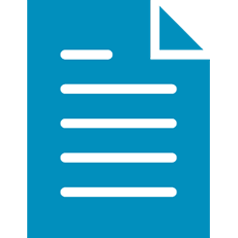The COVID-19 pandemic has affected many aspects of people’s lives. The multidimensional impact of a prolonged pandemic has the potential to worsen people’s livelihoods and well-being, especially for communities at risk like the indigenous peoples of Papua (OAP). The government's immediate response to save lives and livelihoods is crucial in mitigating this impact. Fortunately, the Indonesian government has implemented social protection schemes across all regions, including Papua.
Classified as an underdeveloped area, Papua is Indonesia’s poorest province. Papua’s inability to spur development is not due to a fiscal shortfall. In the context of covariate shocks (widespread, simultaneous impact shocks affecting many people), such as the COVID-19 pandemic, it is crucial to factor in the region’s socio-cultural challenges, political dynamics, and security issues. These different elements carry the potential to set off additional shocks, such as social calamities caused by armed conflicts, further intensifying the vulnerability of the OAP.
The Papua Task Force (2022) recorded 348 cases of violence in Papua from January 2010 to March 2022. Most of these cases of violence (226 cases) involved armed criminal groups (KKB) and armed separatist groups (KSB) or the West Papua National Liberation Army (TPNPB)-Free Papua Organization (OPM). In some cases, the conflict between the two sides has even forced people to displacement. According to the records of the Commission for Missing Persons and Victims of Violence (KontraS), by December 2022, the number of refugees had reached 60,642 people, and 732 had died. The ongoing violence in Papua which has claimed many innocent lives demands the urgent strengthening of the social protection system to build resilience among the OAP.
This project aims to provide a comprehensive analysis of social protection schemes and identify gaps that exclude certain at-risk communities, focusing specifically on Papua, Indonesia’s poorest province.
This project consists of research and advocacy activities. The scope of research activities includes the following:
- Assessing at-risk communities and their access to existing social protection programs to identify gaps between their needs and available services, and determine who are most neglected
- Assessing the stakeholder landscape and policy options to address these gaps for the most neglected and at-risk communities
To comprehensively analyze the social protection gap, this study employs a mixed-methods approach, combining quantitative and qualitative methodologies. The quantitative method employs descriptive analysis techniques, drawing upon secondary data, to examine the characteristics of vulnerable groups, their livelihood outcomes across various dimensions, and their access to social protection in the Papua region.
Meanwhile, the qualitative method included focus group discussions (FGD) and in-depth interviews with stakeholders at the district and village levels, as well as with community members (OAP, non-OAP, and refugees). The qualitative study was conducted in Kabupaten Jayawijaya, Papua, and Kabupaten Sorong, West Papua, in November 2022.
The advocacy component aims to inform stakeholders about the most neglected communities at risk under the current social protection scheme, and advise on possible actions each party can take to protect these communities during and beyond the crisis. This includes policy engagement, policy dialogue, and public campaign.




